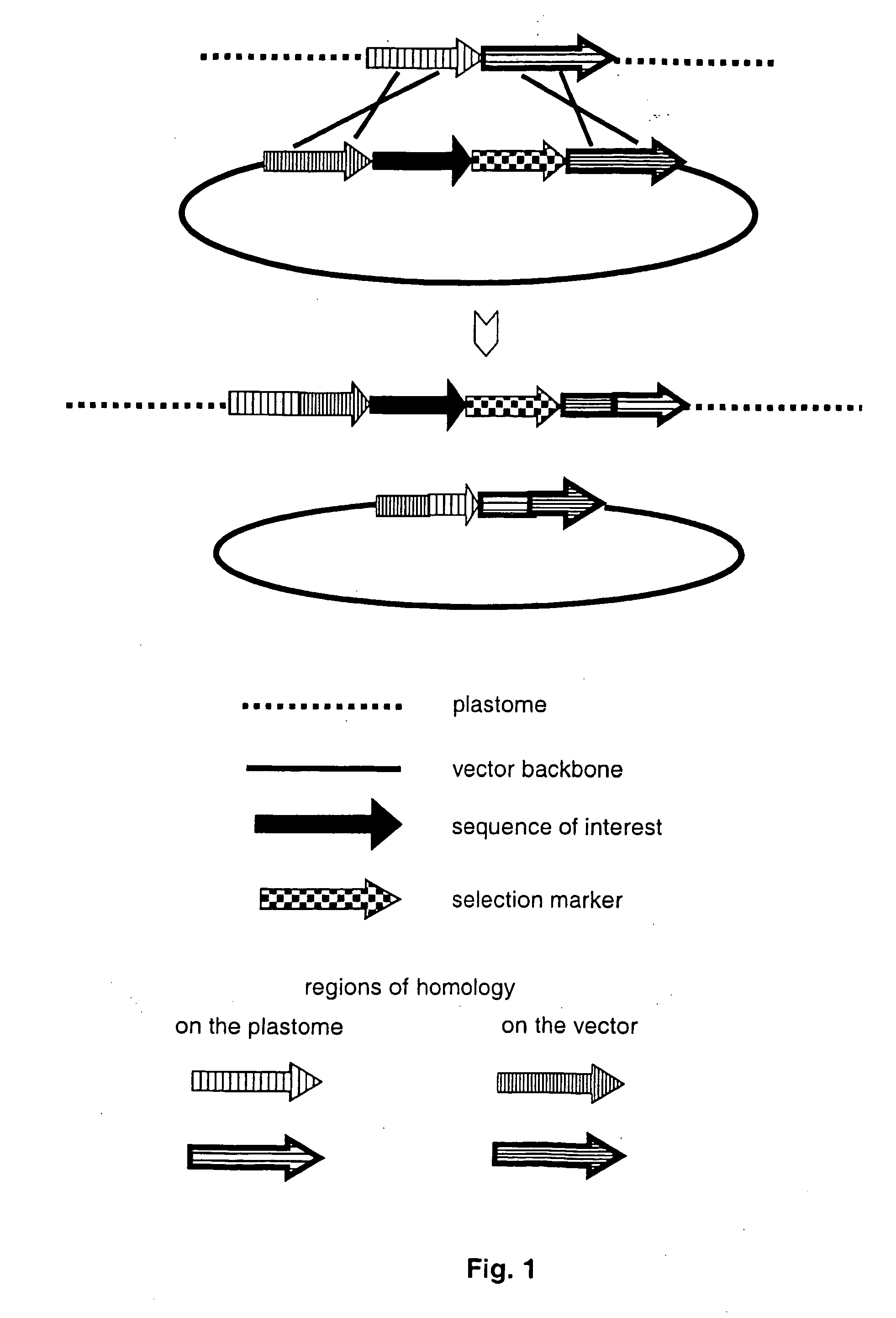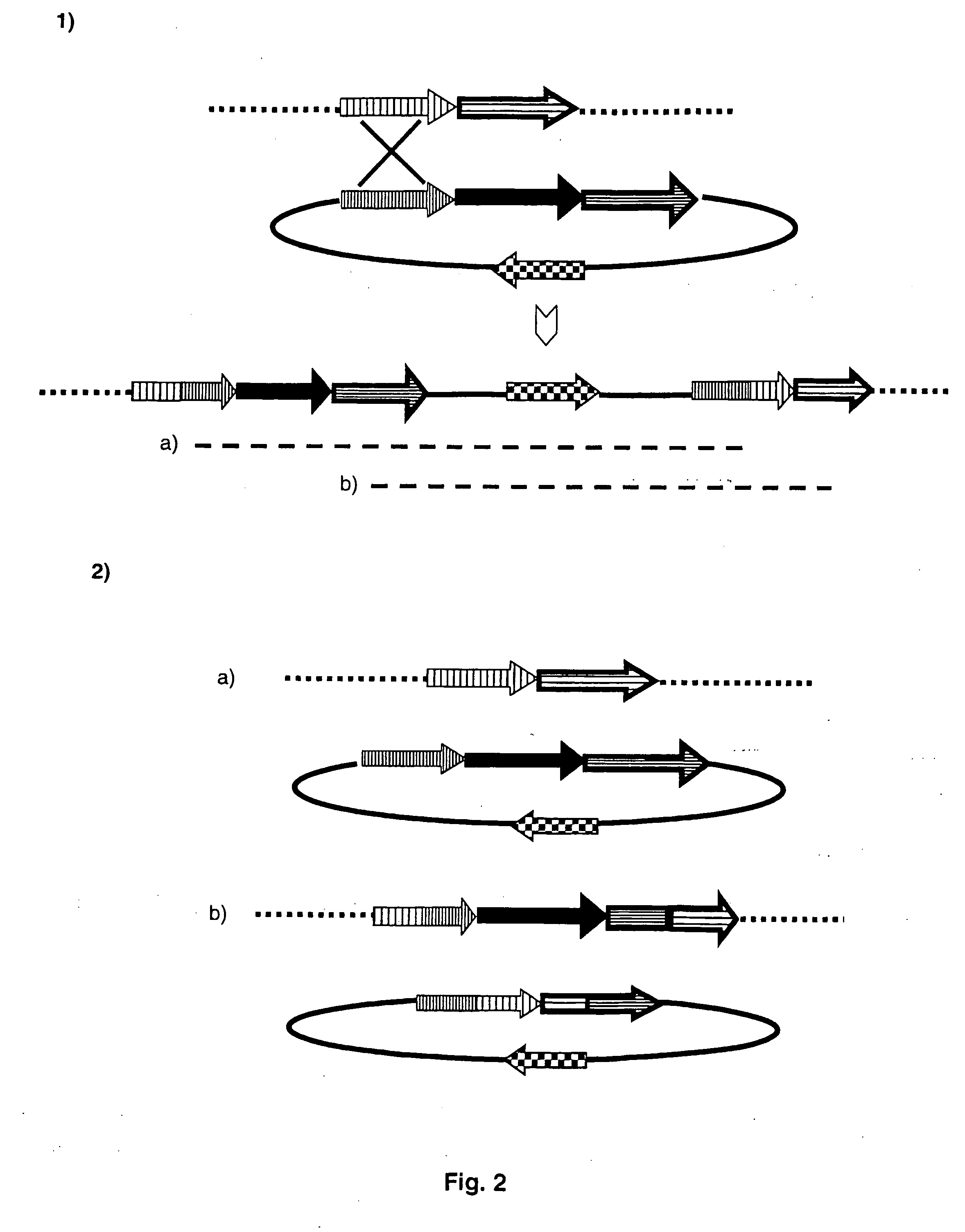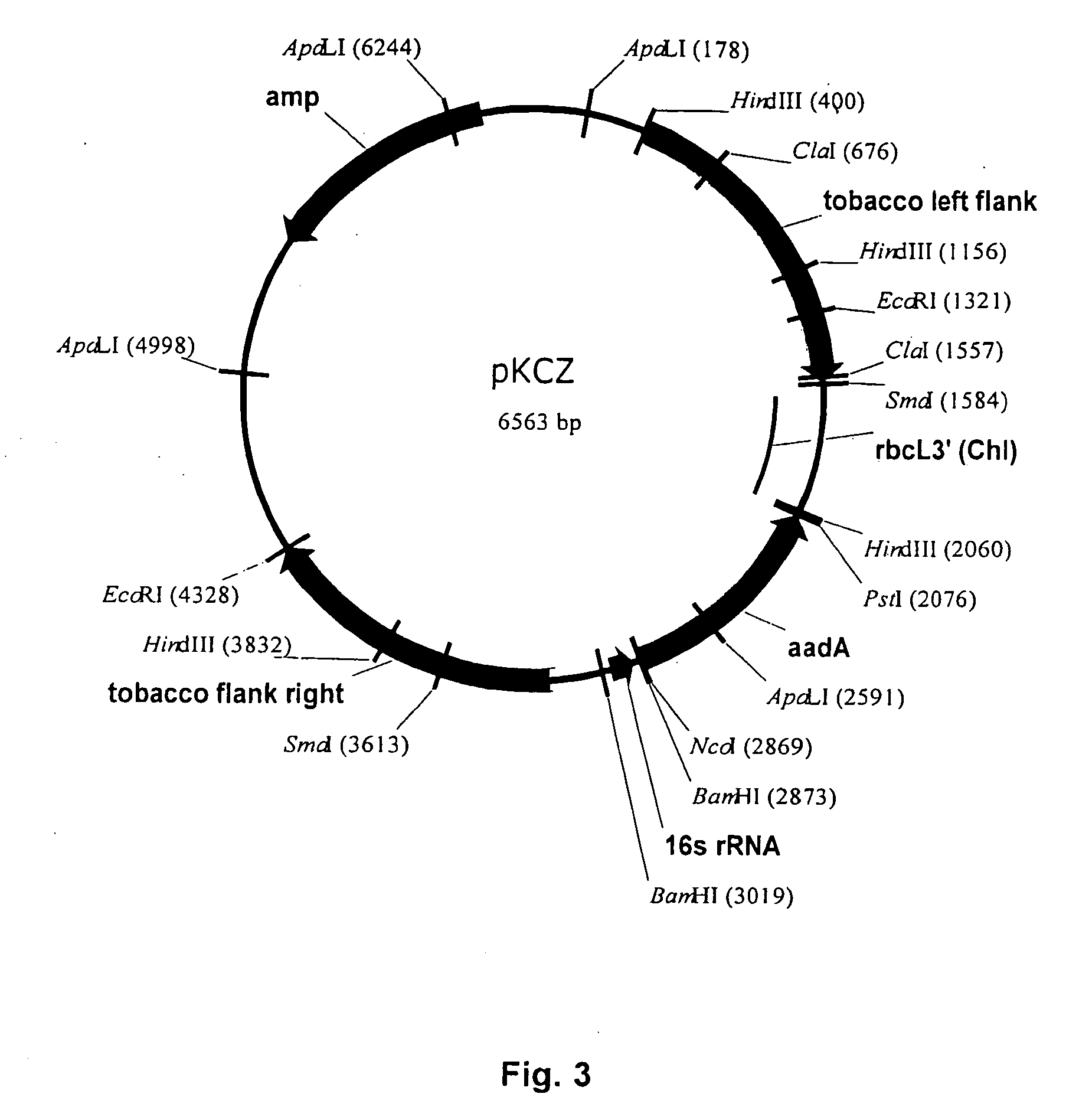Gene expression in plastids based on replicating vectors
a vector and gene technology, applied in the field of plant biotechnology, can solve the problems of insufficient complexity of their genetic information, cassettes, and inability to co-express several genes in an operon under the control of a single promotor, and achieve the effect of high transgene expression levels
- Summary
- Abstract
- Description
- Claims
- Application Information
AI Technical Summary
Benefits of technology
Problems solved by technology
Method used
Image
Examples
example 1
PCR Analysis of Complete Vector Integration (Via One Flank) Into the Plastid Genome
[0190] Plastid Transformation Vector PKCZ
[0191] pKCZ is a conventional plastid transformation vector where the selection marker is cloned between the two flanks used for homologous recombination. The vector is designed to make a neutral insertion between trnR and trnN in the inverted repeat region of the tobacco plastid genome (Zou, 2001). pKCZ comprises two flanking sequences for homologous recombination (corresponding to Nicotiana tabacum plastome sequences 31106-132277 and 132278-133396, according to GenBank accession number Z00044) and an aadA plastid expression cassette under control of the 16s rRNA promoter (Koop et al., 1996). A schematic drawing of the plasmid construct is shown in FIG. 3.
[0192] Generation of Primary Transformants and Subsequent Selection for Homoplastomic Lines
[0193] Particle gun-mediated plastid transformation and subsequent selection were carried out as in example 3. Select...
example 2
Construction of a Selection System Based on the Inactivation and Reconstitution of a Photosynthetic Gene
[0200] Construction of Transformation Vector pICF558 for Inactivation of the Plastid petA Gene
[0201] All cloning procedures were carried out using standard protocols as described in Ausubel et al., 1999.
[0202] Vector pICF558 comprises two flanking sequences (corresponding to Nicotiana tabacum plastome sequences 63335-64334 and 65598-66597, according to GenBank accession number Z00044) and an aadA-cassette (pUC16SaadA Sma vollst, Koop et al., 1996) in between. The homologous flanks for recombination are the 5' and 3' sequences of the petA gene, 1 kb each. The aadA-cassette replaces the petA gene (962 bp) and 300 bp of the petA 3' region.
[0203] Both flanking fragments were amplified by PCR using the following oligo pairs as primers: oSK13 (5'-GGAATTCCATATGGTATAAAACTCATGTGTGTAAGAAA--3') and oSK14 (5'-TCCCCCGGGGGTCCAATCATTGATCGCGAAA-3'), generating an NdeI and a SmaI site at the fragm...
example 3
Inactivation / Reactivation of ycf3 and Stable Introduction of a Gus Gene by Transient Selection for a One Flank Mediated Integration of the aphA-6 Gene
[0222] ycf3 has recently been shown to be required for stable accumulation of the photosystem I (PSI) complex in tobacco (Ruf et al., 1997). Disruption of this gene leads to a conditional pigment-deficient phenotype in the light. Homoplasmic .DELTA.ycf3 plants displayed a complete white phenotype upon regeneration on drug- and phytohormone-free medium under standard light conditions (3.5-4 W / m.sup.2), while the phenotype was much less severe (light green) under low light conditions (0.4-0.5 W / m.sup.2).
[0223] Construction of Transformation Vector pICF577 for Targeted Inactivation of the ycf3 Gene
[0224] A transformation vector, designed to inactivate the ycf3 gene by replacing the first exon and the splicing site of ycf3 (corresponding to plastome nucleotides 46042-46206, position numbers according to GenBank accession number Z00044.1) w...
PUM
| Property | Measurement | Unit |
|---|---|---|
| Pressure | aaaaa | aaaaa |
Abstract
Description
Claims
Application Information
 Login to View More
Login to View More - R&D
- Intellectual Property
- Life Sciences
- Materials
- Tech Scout
- Unparalleled Data Quality
- Higher Quality Content
- 60% Fewer Hallucinations
Browse by: Latest US Patents, China's latest patents, Technical Efficacy Thesaurus, Application Domain, Technology Topic, Popular Technical Reports.
© 2025 PatSnap. All rights reserved.Legal|Privacy policy|Modern Slavery Act Transparency Statement|Sitemap|About US| Contact US: help@patsnap.com



